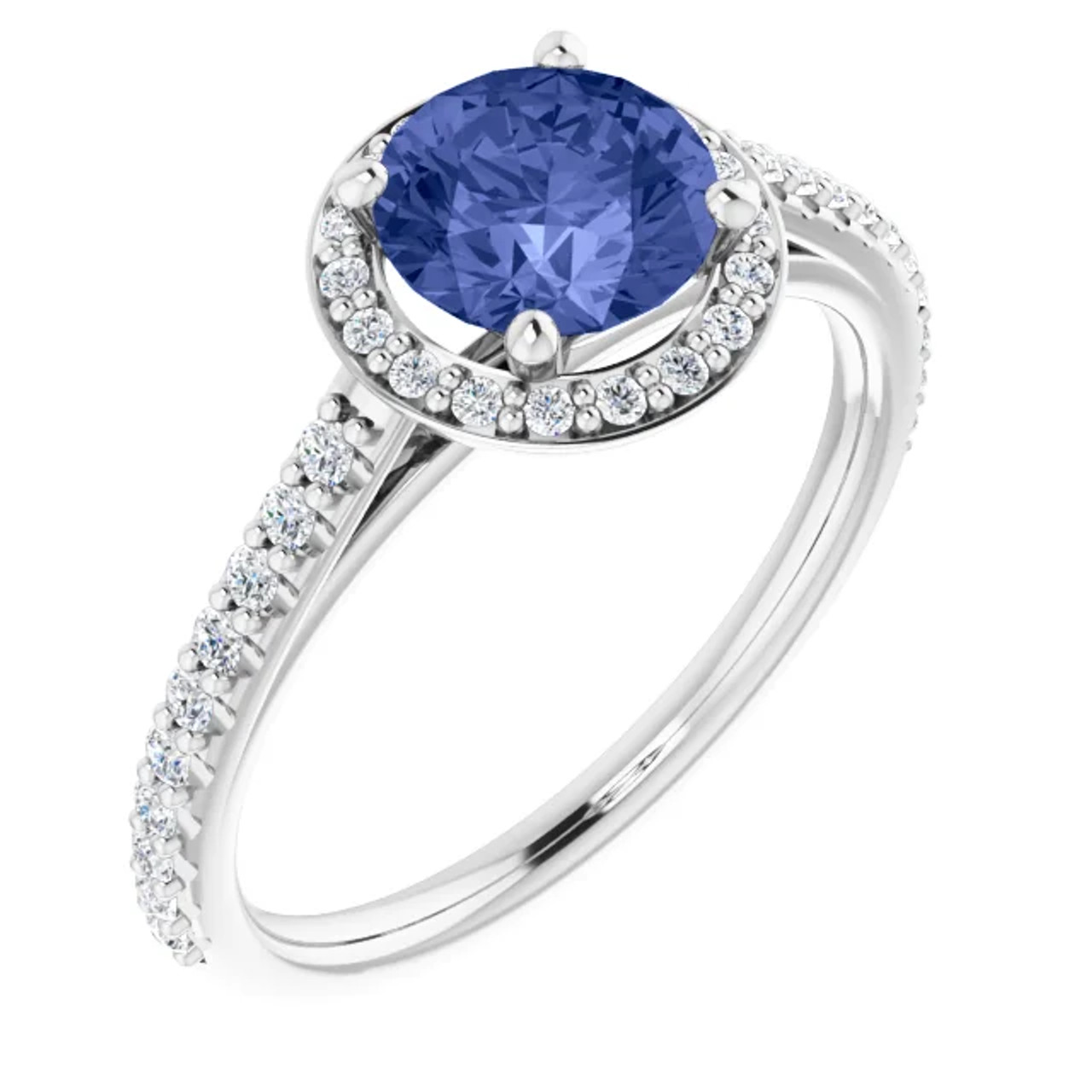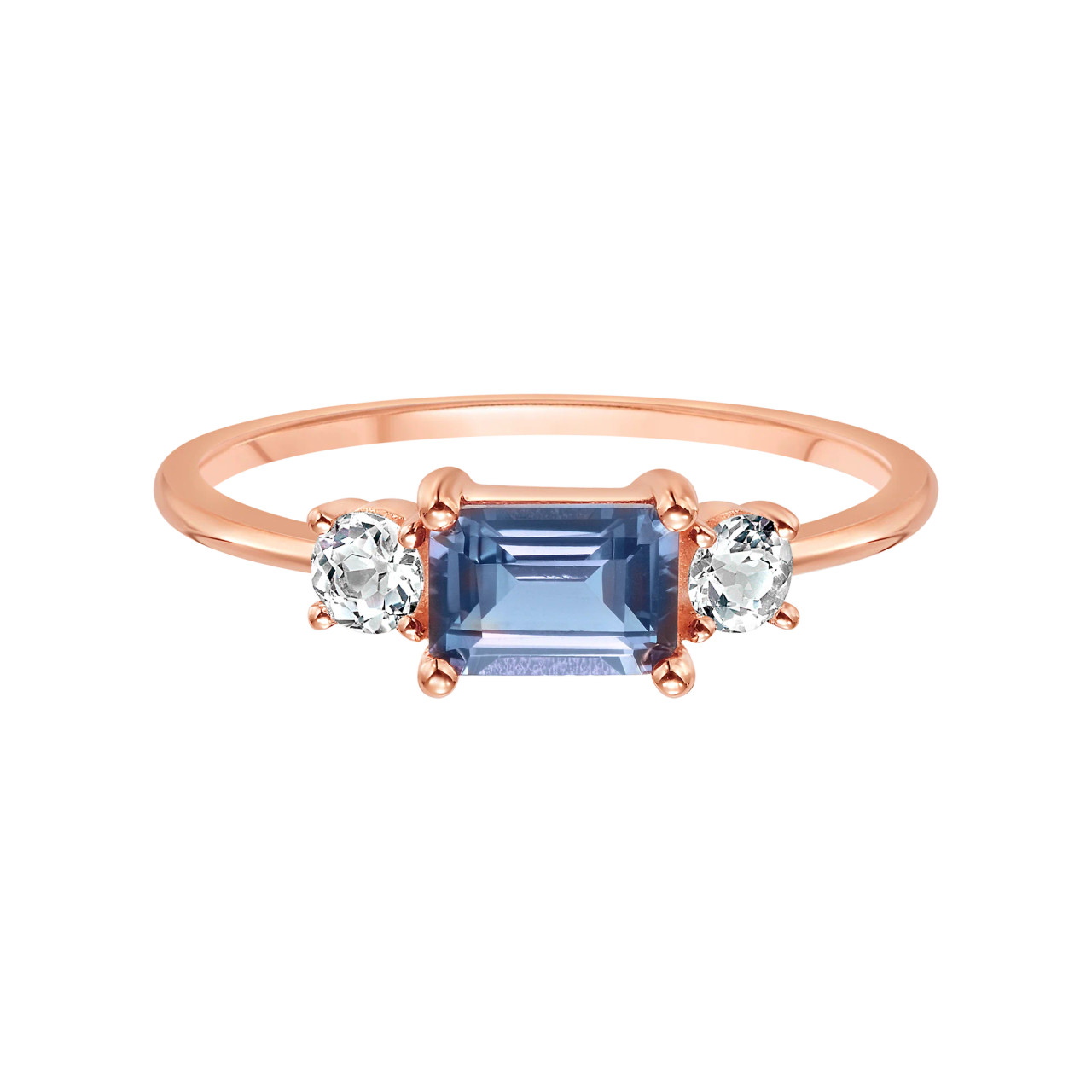If you’ve been engagement ring shopping recently, you’ve probably heard how natural diamonds are considered rare. That’s partly because only 30% of stones mined across the world qualify to become gems. But there are actually several other gems that are more scarce than diamonds. We’re here to tell you more!
Tanzanite
This stunning blue gem belongs to the zoisite mineral family, and it has the ability to flash different colors (aka pleochroism), depending on lighting and viewing angle. Natural tanzanite is only found in one location:
near Mount Kilimanjaro, Africa’s highest mountain, in northern Tanzania. That’s how the stone got its name, and that’s why it’s so rare!
A typical tanzanite stone will range from deep blue to violet and purple. And according to the Gemological Institute of America, fluorescent lighting will enhance the blue tones, while warmer lighting will bring out the violet-purple hues.
So, which shade is most coveted? Gems displaying a deep blue with a touch of violet. However, you’ll likely only find this shade in stones weighing 5 carats or more! Smaller gems are more common, and they’ll therefore have less color saturation.
Fun Fact: In their natural form, plenty of tanzanite crystals actually appear brown with hints of green and yellow. As a result, they receive heat treatments to remove the undesired colors and boost the rich blue hues.
Alexandrite
This rare gemstone is part of the chrysoberyl mineral family and has earned the nickname “emerald by day,
ruby by night.” That’s because the stone changes color in different lighting, due to its uncommon chemical makeup. For example, alexandrite can flash bluish-green shades in daylight or under fluorescent light and shift to brownish or purplish red tones in dim settings.
This stone was first spotted in Russia in the 1800s. Now, alexandrite is commonly found in Brazil, Sri Lanka and East Africa, but its colors aren’t as rich as the original Russian stones. The American Gem Society suggests focusing on color over clarity when buying alexandrite, as better clarity could mute the color change.
Fun Fact: Since natural alexandrite is harder to find than natural diamonds, it’s one of the most expensive gems. Some of the best Russian alexandrite has sold for $10,000 per carat!
Red Beryl
The striking stone is technically a cousin of emeralds, aquamarine and morganite, as they all belong to the beryl mineral family. Sometimes known as “bixbite” or “scarlet emerald,” this version gets its fiery red hues due to a presence of manganese, and it can only be found in New Mexico and Utah’s Wah Wah Mountains.
Fun Fact: Red beryl is reportedly difficult to mine in an efficient and cost-effective manner. Therefore, certain polished stones have also cost as much as $10,000 per carat!
Jadeite
We know what you’re probably thinking: Jadeite is just another name for “jade.” Well, not exactly. Both stones possess different qualities, and jadeite is considered more valuable and scarce. If you’re hunting for jadeite, the most prized pieces display an intense green color, rivaling an emerald’s shade. Top-notch stones also have great clarity, resembling a drop of water or colored oil.
Fun Fact: Although jadeite is often associated with its bright green color, it can actually be found in a variety of hues, such as yellow, lavender, orange-red, blue and black.
Paraíba Tourmaline
The dazzling blue-green tones that flash in Paraíba tourmaline will make you wish this gem was available at every local jewelry store. This beauty didn’t hit the jewelry scene until the 1980s, after being discovered in the Brazilian state of Paraíba. But once it became recognized, it didn’t take long for miners to flood the area.
According to gem experts, this tourmaline’s rich color is caused by the presence of copper. And while larger stones are also apparently located in Mozambique and Nigeria, gems from Brazil are reportedly most valuable.
Fun Fact: The International Gem Society estimates that some pieces of Paraíba tourmaline have cost more than $20,000 per carat!
Benitoite
Benitoite is not only rarer than diamonds, but it also displays more “fire” (essentially sparkle). Also known as the California state gem, this stone boasts a beautiful sapphire blue shade and has only been located in San Benito County, California. Hence the name!
Shoppers who can get their hands on benitoite may find deep blue stones with less noticeable sparkle or lighter gems that glimmer at practically every angle.
Fun Fact: When exposed to ultraviolet light, benitoite reportedly looks like blue chalk that can glow in the dark!
Natural Pearls
Natural pearls were first documented more than 4,000 years ago by a Chinese historian. At one time, these
precious stones were typically found in the Persian Gulf, the Red Sea, Chinese rivers and lakes, European rivers and the waters of what’s now known as Sri Lanka. Starting in the 16th century, pearls were also plentiful just off of Mexico, Central America and Venezuela.
But today, these areas have few pearls. In fact, it’s now extremely rare to find natural pearls due to centuries of “pearl fishing” (aka gathering/harvesting). Instead, you typically see cultured pearls for sale, those formed with the help of human intervention.
When you think of pearls, you likely think of white or cream-colored gems. But they’re actually available in a variety of colors, including black, gray, yellow, orange, pink, lavender, green and blue.
Fun Fact: These are the only gems created by living animals!
Have a question? We can help!
Gage Diamonds is Chicago's premier jewelry showroom and online retailer of engagement rings, wedding bands, and fine jewelry. We offer a selection of dazzling handpicked diamonds, including certified natural and lab grown diamonds, and gemstones.
We’re committed to helping you find the ring of your dreams. For inspiration, browse our selection of natural and lab grown diamonds, or set up an appointment with a member of our trusted staff at our in-person showroom.
We offer no-credit-needed financing – feel free to apply and get your approval within 24 hours!
Pay over time, because love shouldn’t wait.



